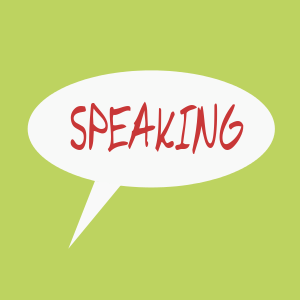
Question tags are a part of English that a lot of non-native speakers make mistakes with. Here’s a quick guide to some of the most common tag questions.
Question tags come at the end of a statement in order to form a question. Commonly used ones include ‘isn’t it?’, ‘haven’t you?’, ‘do you?’, and ‘will you?’.
They should be answered with yes or no but might be answered by hedging instead.
Negative tags are used to check for information that is believed to be positive (the speaker expects a ‘yes’) whereas positive tags are used to check for information that is believed to be negative (the speaker expects a ‘no’). One other use of positive tags is to plead with someone informally.
Examples:
“It’s hot, isn’t it?”
“Yeah, it’s 33 degrees.”
“You’ve been to Paris before, haven’t you?”
“Yes, three years ago.”
“You don’t know her, do you?”
“No, I don’t know her at all. Do you?”
“You won’t be going to work next week, will you?”
“No, I’m going to Tenerife for two weeks!”
Isn’t it?
‘Isn’t it?’ is the most overused and the most incorrectly used question tag. It is sometimes pronounced (and even written) colloquially as ‘innit?’ or ‘ain’t it?’
Rules
- Use it after a statement that uses the ‘is’ form of ‘to be’. Don’t use it with ‘are’, ‘am’, ‘were’, or ‘have been’. Do not use it with a negative statement.
- Use it with a noun form for a singular thing or the pronoun ‘it’ as the subject.
- Use it when you think the positive statement is correct.
- Do not use it at the end of an ordinary yes-no question.
- It can be used with present continuous verb phrases or future tense phrases using ‘going to’ because they can also use ‘is’.
Incorrect examples:
“I’m hot, isn’t it?”
“You like pizza, isn’t it?”
“Is it good, isn’t it?”
“It’ll get dark soon, isn’t it?”
Correct examples
“It’s hot, isn’t it?”
“It’s good, isn’t it?”
“It’s going to get dark soon, isn’t it?”
It drives you mad, doesn’t it?
Use ‘do’ tag questions with any verbs other than ‘to be’, perfect tenses (even using ‘have done’, ‘had done’, or ‘will have done’) or modal verbs (‘can’, ‘could’, ‘must’, ‘ought’, ‘shall’, ‘should’, ‘will’, ‘would’; ‘have to’ can take ‘do’ tags).
Keep tenses and subject-verb agreement consistent: the verb form stays the same and past with past, present with present. Future forms can’t take ‘do’ tags: ‘going to do’ takes a ‘be’ tag (‘is’, ‘are’ or ‘am’); ‘will do’ takes a ‘won’t’ tag while ‘won’t do’ takes a ‘will tag’. Plain ‘have’ verbs regarding possession can take ‘do’ tags.
Correct examples:
“You didn’t come home last night, did you?”
“He drives to the airport every weekend, doesn’t he?”
“They don’t expect you to work on Sunday, do they?”
“You have to get up at six tomorrow, don’t you?” (‘Haven’t you?’ is also fine.)
“He has a cold, doesn’t he?” (‘Hasn’t he?’ is also fine.)
You haven’t got tired yet, have you?
Any statement that uses ‘have’ as the main verb, a perfect tense or a positive ‘have to’ phrase can use a ‘have’ tag. Again, keep tenses consistent.
Correct examples:
“You hadn’t been asleep for more than five minutes, had you?”
“You have to get up at six tomorrow, haven’t you?” (‘Don’t you?’ is also fine.)
“He has a cold, hasn’t he?” (‘Doesn’t he?’ is also fine.)
Answers
Think about the statement you would answer with. This determines whether you use ‘yes’ or ‘no’.
Incorrect Answer:
“The grass isn’t blue, is it.”
“Yes.”
The speaker means to say “Yes, you are right. The grass isn’t blue.” but the real meaning is “Yes, the grass is blue.”
Correct Answer
“The grass isn’t blue, is it.”
“No, it isn’t.”
Incorrect Answer:
“You don’t like chicken, do you?”
“No.”
In this example the speaker means “No, I don’t not like chicken.” Unfortunately this grammar is not a part of common English so the real meaning is “No. You are right. I don’t like chicken.”
Correct Answer
“You don’t like chicken, do you?”
“Yes, I do.”
If you have problems answering tag questions, use full sentences to make sure you are always understood clearly.
